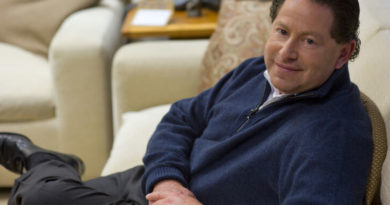Review: Thought-provoking sci-fi drama Bliss works on multiple levels
[ad_1]

A depressed man finds himself questioning the reality of his existence when he meets a free-spirited woman who insists he’s inhabiting a simulation in Bliss, a new film from director Mike Cahill that stars Owen Wilson and Salma Hayek. Sure, it sounds like an indie riff on The Matrix, and there are a few shared elements, but Bliss is markedly different in theme and tone, and it is very much Cahill’s unique vision.
(Major spoilers below the gallery. We’ll give you a heads up when we get there.)
As we’ve reported previously, Cahill also directed the 2011 indie sci-fi film Another Earth—his first feature—which received a standing ovation at its premiere and won the Alfred P. Sloan Prize at the 2011 Sundance Film Festival. Cahill’s 2014 followup feature, I Origins, also snagged the Sloan Prize; in fact, he’s the only director to have twice won the award, so he’s got some serious indie sci-fi film street cred.
The plot of Another Earth centered on the discovery of a mirror Earth planet, where everyone has a doppelgänger. Clearly, Cahill is interested in exploring themes of duality, because he has returned to that rich vein for Bliss (not to be confused with the 2019 Fantastic Fest selection of the same name).
Per the official premise: “An unfulfilled man (Wilson) and a mysterious woman (Hayek) believe they are living in a simulated reality, but when their newfound ‘Bliss’ world begins to bleed into the ‘ugly’ world, they must decide what’s real and where they truly belong.”
Wilson plays Greg Whittle, a divorcée who is stuck in a dead-end job. He spends most of his work time not answering calls as he daydreams of an idyllic world and sketches out his mental pictures of that world. “I don’t know if it’s real,” he muses. “But it has a feeling, and the feeling’s real.” Not surprisingly, his employer, Bjorn (Steve Zissis), takes a dim view of this behavior: despite firing Greg, the two get into a shoving match and Bjorn hits his head on a table and is killed.
Greg flees the office before the body is discovered and heads to the bar across the street. That’s where he meets Hayek’s Isabel. “You’re real,” she says, telling him that all the people he sees outside aren’t real—the two of them are just in a simulation. To prove it, she demonstrates how she can manipulate people and objects in this “ugly simulation.”
Isabel invites him to stay in her encampment under a traffic bridge, and she introduces him to a crushed yellow crystal hallucinogen. The unnamed drug allows Greg to also manipulate his physical “reality,” convincing him that Isabel is right and this really is a simulation. But then his daughter Emily (Nesta Cooper) tracks him down—he missed her graduation—and Isabel feels threatened by this strong emotional tie. She insists Emily is also part of the simulation and, hence, not real. So she introduces Greg to a second, stronger drug: a blue crystal administered via a nasal injection device. Taking it ejects them both from the “ugly” world and into the idyllic world of Greg’s daydreams.
(Warning: Major spoilers below. Stop reading if you haven’t yet watched the film.)
-
Owen Wilson’s Greg leads a dreary office existence.
-
He finds comfort in sketching idyllic scenes.
YouTube/Amazon -
What if that idyllic alternative reality existed?
YouTube/Amazon -
He meets Isabel (Salma Hayek) in a bar, and she tells him they are in a simulation.
YouTube/Amazon -
Got your nose!
-
Greg wakes up in a different world.
YouTube/Amazon -
“There’s my guy.”
YouTube/Amazon -
Isabel is brilliant scientist.
YouTube/Amazon -
Her “brain box” lets people experience “ugly” simulations to better appreciate their perfect existence.
YouTube/Amazon -
Yep, that’s pretty ugly.
YouTube/Amazon -
Ah. That’s better. And check out the holographic people.
YouTube/Amazon -
Bill Nye sighting!
YouTube/Amazon -
Greg’s daughter Emily (Nesta Cooper) begs him to choose between his worlds.
YouTube/Amazon -
But is Emily part of the simulation, too?
YouTube/Amazon -
Hijinks at the ugly world roller rink.
YouTube/Amazon -
Things go haywire in the ugly world.
YouTube/Amazon
Specifically, Greg wakes up in a laboratory. He’s attached to a giant computer called the Brain Box. Isabel invented it to plug people into “ugly simulated worlds to generate appreciation for the real world.” Greg doesn’t remember much about this “real” Brain Box world he’s now experiencing, but he soon settles in, as romance blooms with Isabel. But eventually, aspects of the “ugly” world start seeping through, including a ghostly figure of Emily, imploring Greg to come back to her.
It’s the onscreen chemistry between Wilson and Hayek, and the way they flesh out their respective roles, that anchors the film, bolstered by a solid script and some inventive VFX. Those effects are based more on actual photography than CGI (although there is definitely some CGI). Take, for example, the holograms of people projecting themselves onto the streets of the Brain Box world. According to VFX supervisor Luke DiTommasso, Cahill was adamant that these should not resemble the famous Princess Leia hologram in Star Wars: A New Hope. Instead, the look was grounded in photography, exploiting rainbow prism lens flares to achieve a natural chromatic aberration, giving the figures a ghost-like quality.
Particularly when the worlds start to blend together, it might have been easier to simply use CGI. Instead, DiTomasso’s team made good use of the creative (and consistent) set design and Cahill’s long tracking shots to create the illusion of blending realties, augmented here and there with CG elements as needed. Not only did this help rein in production costs, the end result felt more realistic—and both worlds need to feel reasonably realistic in order for the film’s central conceit to work. “If you can shoot something, shoot something,” DiTommasso told Ars about his philosophy regarding CGI. “It you need a duck crossing a street, let’s shoot a duck crossing a street. If you need a duck to tap dance and sing, then we need CGI.” (There are no tap-dancing singing ducks in Bliss.)
So, which world is real and which is the simulation? That is the question. Cahill opts for ambiguity on that score; one can interpret the ending in several different ways. On the most literal level, Greg is an addict whose drug use has estranged his family and gets him fired, sending him spiraling into a hallucinogenic drug spree with Isabel, a homeless fellow addict living under the traffic bridge. Their shared experience manipulating elements of the “ugly” world, and of being in the Brain Box paradise, are part of a drug-induced folie a deux. But the high wears off, and the two worlds start to collide, forcing Greg to make a choice: remain with Isabel in their shared dream world, or stop “chasing bliss” and choose to stay with his daughter in the “ugly” world.
Ugly
There’s strong evidence for that interpretation. Isabel becomes increasingly unhinged, exhibiting classic addict behaviors, and there’s a strong whiff of wish-fulfillment fantasy in the Brain Box world. In the end, Greg gives up the fantasy and chooses the “ugly,” “real” world, even attending his first 12-step meeting. He’s attempting to rebuild his life and relationships, having learned to see beauty even in the “ugly” world.
But there are other elements that cannot easily be explained away, such as what, ultimately, happens to Isabel, last seen facing down several armed cops as she snorts the last dose of blue crystal. Was she shot? Or was she right about the “ugly” world being a simulation, and she returned to the Brian Box world in the nick of time? In that alternate interpretation, Greg chooses to remain in the “ugly” simulation to be with his daughter—willing to make that sacrifice because his love for her is real, even if she is not.
Or maybe reality is determined by whichever world we ultimately choose. In that case, both the “ugly” and Brian Box realms are “real.” How could you ever really be sure? The director’s willingness to let his audience soak in all that uncertainty makes Bliss Cahill’s strongest, most ambitious film to date.
Bliss is currently streaming on Amazon Prime.
[ad_2]
Source link




